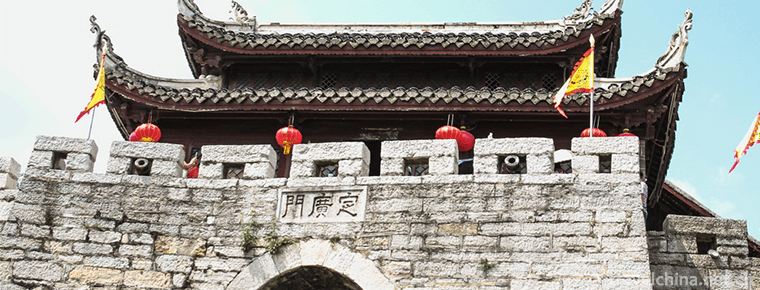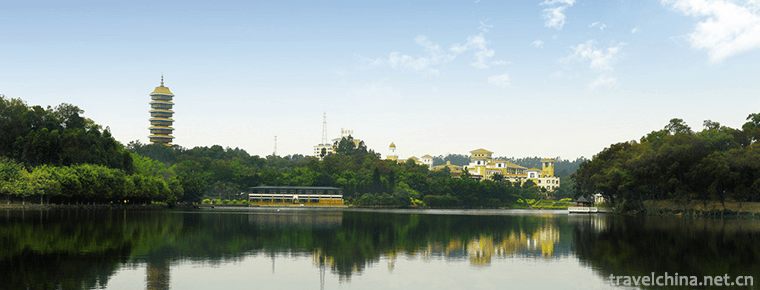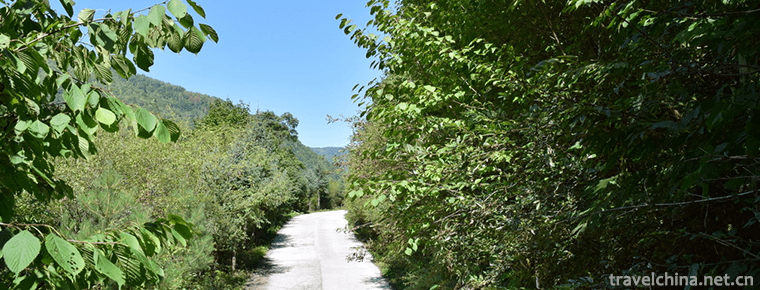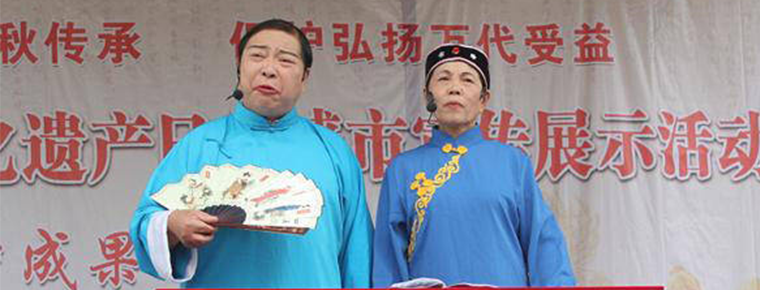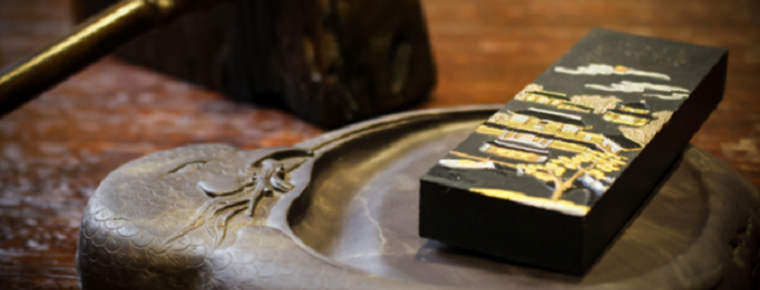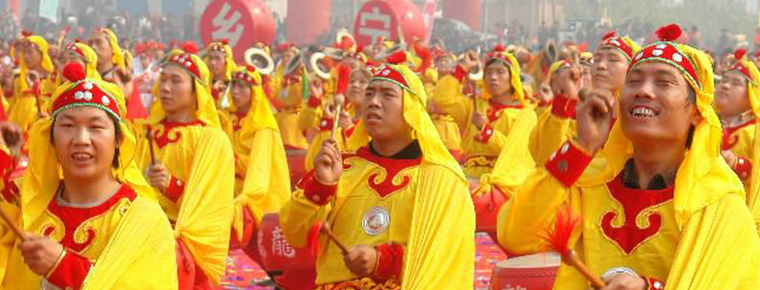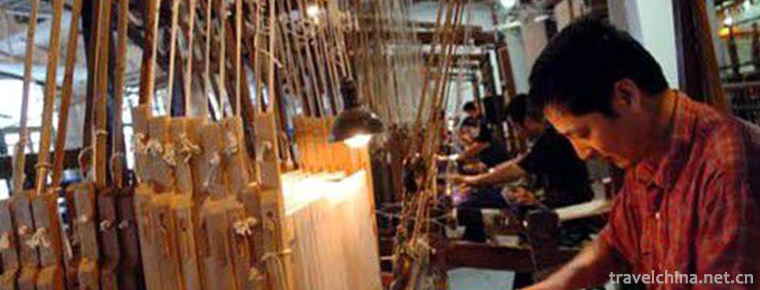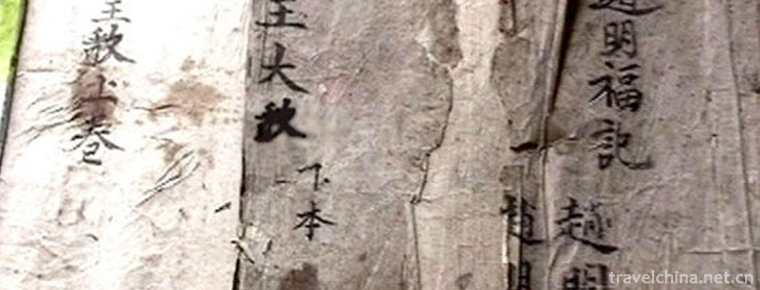Production Techniques of Chinese Painting Pigments
Production Techniques of Chinese Painting Pigments
Jiang Sixutang's skill in making Chinese painting pigments is one of the intangible cultural heritages. The manufactured products of Jiang Sixutang Chinese Painting Pigment Factory have the characteristics of shine, light and dusty, water immersion, ink blending, paper binding and durability. In 1981, Jiangsu Province was awarded the certificate of quality products. In 1982, it was awarded the high-quality products of the Ministry of Light Industry. It is not only well-known in China, but also exported to Japan, the United States, Western Europe and Southeast Asian countries.
brief introduction
Declaration area or unit: Suzhou City, Jiangsu Province
Jiang Sixutang, founded in the reign of Qianlong in Qing Dynasty, is a famous professional shop of Chinese painting and pigments in China. The pigments produced by Jiang Sixutang include stone, turquoise, anthocyanine, ochre, cinnabar, silver, Zhubiao, carmine, magenta, mud gold, clay silver, lead powder and gamboge. Some pigments are also different in depth, light glue, heavy glue, and the classification of the "Tian" character. Its raw materials can be divided into five categories: mineral, plant, animal, metal and chemical synthesis. The origin of these raw materials is distributed throughout the country, some in the mountains, forests, valleys and poor places. Because of the different nature of various raw materials, the manufacturing methods are also different. Some need to be grinded, some need to be soaked, some need to take their essence, and some only need to lift floating fat. Even if the same raw material, because there are advantages and disadvantages, we must make good choices. However, no matter what kind of raw materials, in the production of pigments are inseparable from the use of glue, the quality of the colloid and the appropriate blending of concentration and shade in the application, have a direct impact on the quality of finished products. If green is made, glue must be used, but the glue must be clear when it is made; when clay, gold, mud and silver are made, glue must be used to grind, and other light pigments such as anthocyanine, ochre, vermilion, carmine and magenta are made of glue. The finished product must be boiled into paste blocks for easy application.
Unfortunately, due to the shortage of some raw materials for the production of traditional Chinese painting pigments and the fact that most of the processes rely on handicraft and the complexity of production, some young people regard learning and art as a fearful way. In addition, the product market has certain limitations, and the traditional Chinese painting pigments technology is now facing the predicament of lack of successors. As a descendant of Jiang's pigments technology, Qiu Qingnian, who is about to retire, is worried about this. He runs to appeal for support from all sides, hoping to carry forward this traditional technology.
Characteristic
Since Ming and Qing Dynasties, the Wumen Painting School in Suzhou has been a group of celebrities, which has further promoted the development of traditional Chinese painting painting production techniques. Jiang Sixutang in Suzhou has been the first choice of Chinese painting countries. This production technique was selected as the second batch of Jiangsu intangible cultural heritage list. "Jiang Si Xu Tang" is an old name in Suzhou. It was founded in the reign of Qianlong in the Qing Dynasty. Its initiator's name is Jiang. The name of "Jiang Si Xu Tang" is the name of its painting and calligraphy hall. Qiu Qingnian was originally a craftsman of Jiang Sixutang Chinese Painting Pigment Factory in Suzhou. He has been engaged in the production of Chinese painting pigments for more than 40 years. According to reports, the raw materials of traditional Chinese painting pigments are from nature, which can be divided into minerals, animals, plants or metals. After crushing, the fine powder will go through more than ten processes, such as grinding, gluing, precipitation, decocting, etc. It can not go away when making color, and sometimes it will wait for four or five hours continuously. Such a fine grinding and slow grinding, the final out of the furnace pigments can be fine as light dust, water is melted, pure and lustrous, solemn color.
Related information
On August 2, 2009, Qiu Qingnian, the only heir of the provincial intangible cultural heritage "Jiang Sixutang's Painting Pigment Making Skills", opened "Qiu's Painting Pigment Printing Mud Studio" in "Laoshantang Folk Art Museum" of Shantang Street. As a result, the world-renowned production techniques of Suzhou traditional Chinese paintings have a new window to show. Previously, Qiu Qingnian could only wait at home for the old customers to come.
At the same time, some people in the industry are worried to see that many people in Suzhou are in the same situation and are in danger of losing their lives. Some insiders believe that "to rescue folk life, we should help Jiang Sixutang's painting production skills, like to let them out of the boudoir!"
Famous Brand Techniques Difficult Situation Out of Boudoir
In the past, painters used to rely on their own production of pigments, not only time-consuming, but also difficult to stabilize the quality. More than 200 years ago, the emergence of Jiang Si Xutang, a specialist painter in Suzhou, solved the problem. Speaking of famous painters such as Xu Beihong and Qi Baishi, most of the pigments used in their handed-down paintings come from Jiang Sixutang, and Qiu Qingnian is proud to this day. He said that because of the use of natural raw materials and exquisite production technology, "Jiang Si Xutang" pigments have the advantages of bright color, pure and lustrous, multi-mounted, durable and unchangeable. Since the 1950s, Jiang Sixutang's traditional Chinese painting pigments have become the only brand-name goods in the country and are well-known both at home and abroad.
But in recent years, due to the impact of cheap chemical pigments, the users of Jiang Sixutang's pigments are decreasing. With the constraints of raw materials, this "centuries of color" is no longer the scene. Qiu Qingnian admitted that the raw materials of "Jiang Si Xutang" pigments come from nature. Some of them are minerals, some are animals and plants, some are metals, and some of them are nearly exhausted. At present, he can only use some raw materials accumulated in his early years to make a small amount of Chinese painting pigments and mud for some old customers. More importantly, most of the traditional pigments are manufactured by hand, which is complicated. Young people are afraid of learning and art, resulting in the embarrassing situation of lack of successors. After the studio opened, Qiu Qingnian said as he developed cinnabar, you see, this kind of paint can only be made 2 jin at a time, but it only takes 10 days to float, plus grinding and hammering, the whole process takes 1 month. Why would young people like to learn such crafts? In the speaking room, he has been sweating like a rain.
Now, most of the old craftsmen who can make pigments have passed away, and Qiu Qingnian, 66, has retired for many years. He had been worried that the flower of traditional crafts would fade away. This time I opened my studio, which gave Qiu Qingnian more or less a glimpse of hope. He said that through this studio, at least more people can understand the advantages of Jiang Sixutang's Chinese painting paints. Perhaps, the number of painters using Jiang Sixutang's pigments will increase again, and those who are interested in Jiang Sixutang's pigments making skills will also appear slowly, eventually passing this skill on.
Citizen Mr. Shen and other consumers think that many people know that folk products are good things, but often do not know where to sell. If they can walk out of the boudoir like Qiu Qingnian, it will be much more convenient for them to choose and buy.
How many "non-legacy" clues are better than 2,000?
In addition to Qiu Qingnian, the handover of Jiang Sixutang's traditional Chinese painting painting skills, what about the other outstanding handlers? It facilitated the introduction of Qiu's Chinese painting paints and mud printing studio in Shantang Street's local chronicle office and Liuyuan Street. In the previous stage, they focused on Liuyuan Street, and investigated and explored the handicraft inheritance of folk craftsmen in our city. The results show that Suzhou is a famous cultural city with rich cultural heritage, but the living conditions of many folk artists are unsatisfactory. Some traditional techniques with unique artistic charm and inheritance value have encountered bottlenecks in their development.
Take Han Liangyuan, an artist of overlapping rockeries in Suzhou gardens, as an example. Although the skill of folding hills has been listed in the city's intangible cultural heritage, and Han Liangyuan's skill has been imparted to his children and others, the theory of Korean rockery folding has not been systematically recorded. Han Liangyuan is 82 years old this year. Those precious treasures that are deeply hidden in the memory of the elderly are very precious. In this regard, the elderly also have this awareness, began to sort out Han Shipu and Han's mountain folding techniques. However, if the elderly are to complete the work independently, they will not be able to show their talent and financial strength.
The same is true for artists such as Yu Chengmin, a master of antique bell-making, and Wu Weimin, a maker of toy leather tigers. Yu Chengmilling has mastered the manufacturing skills of bell chimes, which are few in the scope of our city. But at present, he only passes this skill on to his son to make a living, and has no long-term development plan. At the same time, due to the single product variety, the audience is limited to orchestras, the market is narrow, and can not get the support of relevant departments or industries, the prospects are not optimistic.
Wu Weimin's leather tiger production technology is relatively simple, at the same time, because the toy packaging is simple, the pattern is single, limited to a few scenic spots sales, the market limitations are very large, for this reason, at present only family-style workshop production, Wu Weimin also received a foreign exposition of 50,000 goods orders, but because only their husband and wife, can not be expelled in a short time, the most. We can only give up after that.
Gong Ping, director of the Office for the Protection and Management of Civil Ethnic and Folk Culture, said that at present, there are 94 items (not counting repetitions) in the list of "non-relics" in Suzhou, among which less than 10% are in good living condition, such as embroidery, jade carving, etc. About 5% of the items are seriously endangered, among which Jiang Sixutang's painting production skills are one of them. In fact, the items listed in the list of "non-heritage" only account for a small part of the "non-heritage" in Suzhou. For example, the fabrication of antique bells and toy tigers mentioned above has not been included. Gong Ping said that the census in various counties and cities showed that there were more than 2,000 "non-legacy" clues in Suzhou, and some "clue" heirs might be in the same situation. Therefore, Qiu Qingnian and other folk craftsmen's living conditions can be said to be a microcosm of Suzhou folk craftsmen.
Staying at home is not the way out. Why worry about tomorrow?
According to the Municipal Chronicle Office, it is not surprising that the variety and skills of folk art have emerged and disappeared with the development and change of the times. But we must attach great importance to and protect the ancient, unique and valuable folk handicraft, so that these valuable traditional skills scattered among the people can be passed on from generation to generation, which is also the responsibility of our contemporaries.
Gong Ping introduced this. At present, the municipal government has issued the No. 51 government decree of "Measures for the Protection of National and Folk Culture in Suzhou", issued a series of documents and notices, and published four lists of representative works of intangible cultural heritage. These prove that the government attaches great importance to the protection of traditional ethnic and folk culture in Suzhou. Government departments have also given corresponding support to projects that have become "non-legacy". More than 2,000 clues that have been surveyed may also be included in the next "non-heritage" at the municipal level. The premise is to declare the "non-heritage" at the county level to the city and to become the "non-heritage" at the county level.
The Municipal Chronicle Office further suggests that Suzhou has a lot of good things, so we should identify as many as possible the rescue objects of "non-heritage" and "reserve non-heritage", distinguish the folk artists who need to be protected, rescue the current endangered but still inherited artistic varieties first, and organize the compilation of relevant materials, special works and videos for the old artists by providing necessary funds. The methods of selecting apprentices, setting up relevant subjects in technical schools, and supporting heirs to set up studios are to activate them.
At the same time, some insiders suggest that it is very important to help them get out of the boudoir and break out of the market in the rescue of folk life. Qiu Qingnian's opening a studio is a good attempt. Before Qiu Qingnian, embroidery and other products in Zhenhu Street of High-tech Zone had become more and more prosperous because of the cultivation of market. Our city can use Zhenhu Street as a reference to help folk crafts to form industrial agglomeration areas, or product distribution centers. "With the market, why not worry about the future of folk life!"

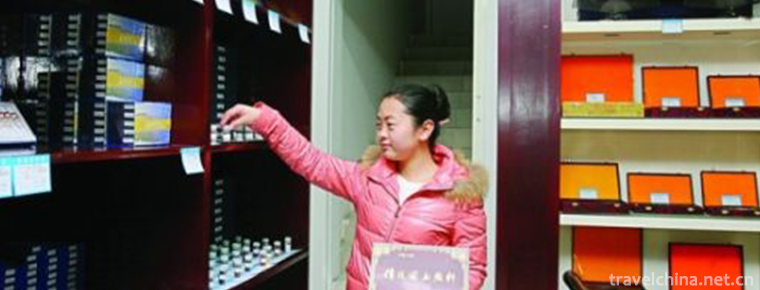
-
Xibaipo Scenic Area Pingshan County Shijiazhuang
Xibaipo is located in the middle of Pingshan County, Shijiazhuang City, Hebei Province, with a total area of 16,440 square meters. It was the seat of the CPC Central Committee.
Views: 147 Time 2018-11-24 -
Huaxi Qingyan Ancient Town Scenic Area
Qingyan Ancient Town, one of the four ancient towns in Guizhou, is located in the southern suburb of Guiyang City. It was built in Hongwu ten years (1378) of Ming Dynasty and was formerly a military f.
Views: 214 Time 2018-12-12 -
sanshui forest park
Sanshui Forest Park is located in the north suburb of the southwest town of Sanshui District, Foshan City, Guangdong Province..
Views: 142 Time 2018-12-18 -
Xinglong mountain
Xinglong Mountain is the nearest National Natural Forest Reserve to Lanzhou City. It is located five kilometers southwest of Yuzhong County, Lanzhou City, 60 kilometers away from Lanzhou City.
Views: 171 Time 2018-12-24 -
Guangegou National Forest Park
Guan'e Gou National Forest Park, located in the outskirts of Chang County, Longnan City, Gansu Province, consists of Guanzhugou, Goose Lou Gou, Mulong Gou, Miaogou and other scenic spots.
Views: 205 Time 2019-01-13 -
Pearl rice paste
Pearl rice paste is a delicacy. The main raw material of this dish is fresh pearl rice. The main condiment of this dish is sugar. This dish is mainly made by boiling..
Views: 296 Time 2019-03-23 -
Hanchuan good books
Hanchuan Shanshu is a kind of traditional folk music which combines rap and singing in Hubei Province. Since the Qianlong period of the Qing Dynasty, it has a history of 260 years. .
Views: 126 Time 2019-05-02 -
The Making Skills of Hui Ink
Hui ink production technology, Jixi County, Shexian County, Huangshan Tunxi District, Anhui Province, local traditional handicraft, one of the national intangible cultural heritage..
Views: 81 Time 2019-05-04 -
Auspicious gongs and drums in southern Shanxi
Weifeng gongs and drums in southern Shanxi are folk traditional percussion music which was born and popular in Linfen area of Shanxi Province. The first batch of them were selected into.
Views: 132 Time 2019-05-07 -
Handmade Weaving Techniques of Wood Machine Cosmetics
Nanjing Yunjin wooden machine makeup and hand-weaving skills, the local traditional skills of Nanjing, Jiangsu Province, one of the national intangible cultural heritage..
Views: 130 Time 2019-06-07 -
Panwang Song
Panwang Song is a collection of Yao folk poetry. Mainly spread in the residential areas of the Yao nationality in Nanling Mountains, Jianghua is a folk literature with distinct national characteristic.
Views: 128 Time 2019-06-08 -
China Youth University of Political Studies
China Youth University for Political Science (China Youth University of Political Studies) is located in Beijing. It is the state-level "Communist Youth League Central Research Center for the the.
Views: 94 Time 2019-12-25

